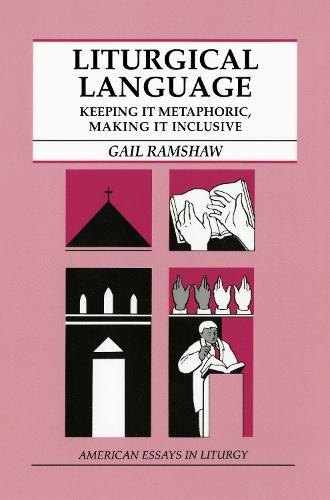Overview
""Liturgical language"" denotes those words used by Christians in their communal praise and prayer. Liturgical language is often metaphoric, as metaphors help us explain the unexplainable they help the human mind contemplate the divine. Problems with liturgical language occur when these metaphors exclude some Christians when their aim should instead be to bring all Christians into communion with God. Recognizing that both metaphoric and inclusive language are necessary in Christian worship, Ramshaw clarifies how these need not be contradictory criteria for forming liturgical language. Through a review of the history of language, Ramshaw illustrates the difficulties of forming texts from words that have undergone numerous translations and whose primary meanings have also changed throughout the centuries. An examination of trends in generic American English, the vernacular on which liturgical texts are to be built, reveals two tasks for liturgists: the arduous work of retranslating liturgical texts and the creative work of crafting intercessions, hymns, and homilies that are inclusive in language. Her discussion of symbolic imagery and theological language illustrates how essential it is that words be evaluated and chosen with understanding and care. Ramshaw writes for those who find beauty and truth in metaphor and for those who strive to invite everyone to the Eucharistic banquet. She encourages all who formulate liturgical language to contemplate with seriousness and Vision the ultimate objective of this language so that it can speak with meaning and beauty to all.
Full Product Details
Author: Gail Ramshaw
Publisher: Liturgical Press
Imprint: Liturgical Press
Dimensions:
Width: 15.20cm
, Height: 0.30cm
, Length: 22.90cm
Weight: 0.085kg
ISBN: 9780814624081
ISBN 10: 0814624081
Pages: 54
Publication Date: 01 February 1996
Audience:
Professional and scholarly
,
General/trade
,
Professional & Vocational
,
General
Format: Paperback
Publisher's Status: Active
Availability: Out of print, replaced by POD

We will order this item for you from a manufatured on demand supplier.
Reviews
Ramshaw's brief work points out some directions liturgists can take in this new millennium.Philippiniana Sacra Ramshaw makes an excellent contribution to the discussion on liturgical language with this efficiently packed essay.Modern Liturgy
Ramshaw makes an excellent contribution to the discussion on liturgical language with this efficiently packed essay.Modern Liturgy Ramshaw's brief work points out some directions liturgists can take in this new millennium.Philippiniana Sacra
Ramshaw's brief work points out some directions liturgists can take in this new millennium. Philippiniana Sacra
Author Information
Gail Ramshaw studies and crafts liturgical language from her home outside of Washington, DC. A Lutheran laywoman, a past president of the North American Academy of Liturgy and recipient of its Berakah award, and professor emerita of religion at La Salle University, she has published extensively about biblical metaphors, the Revised Common Lectionary, and parish liturgical practice.




